#rpg tool
Explore tagged Tumblr posts
Text
Belial's Meat
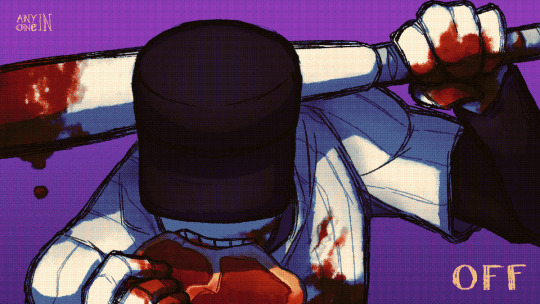
I'M SO HAPPY WITH THE NEWS YIPPIEEE
#artists on tumblr#paint tool sai#fanart#indie games#digital artist#off fanart#off the game#off game#off mortis ghost#off#mortis ghost#off the batter#the batter#the batter off#off rpg#YEAHHHHHH#THEY'RE BACKKKKKKKKK#so happy yippie
2K notes
·
View notes
Text
So my home ttrpg group is between longform games right now, and I have been planning to bring a bunch of games to them this weekend as options for what we might play next. However, I have been trying to figure out how to talk about the games in a way that doesn't rely as much on me explaining the vibes to them.
I know that people have a bunch of qualitative categories for how they explain games, but I find the idea of saying things like Dark Fantasy OSR, or Lesbian Goofball PBTA less helpful when talking about how games actually play, especially when two games in the same category are like, wildly different in the way they use their frameworks.
So I invented a 6 axis, 1 to 5 star rating scale for TTRPGs that you are free to borrow when talking to groups, or whatever.
TTRPG 5 Star Rating Matrix
Width
What is the scope of this game? Is it narrowly about one thing or does it encompass many types of play? (Credit to friend of the blog @ostermad-blog for this one, they came up with it from my draft)
Weight
How much cognitive load does the player need to bear? Do rules often need to be referenced verbatim? Can those rules fit on a handout?
Wargame
Is the player expected to apply tactical acumen? Is movement tracked tightly or loosely? Does a bad build punish a player?
Writers Room
How much are players expected to make narrative choices and drive the story without the rules scaffolding them? Does this game fall apart without excellent improvisational storytellers?
(Prep)Work
Does this game require a lot of pre-planning by the facilitator? Are there intricate systems to attend to outside of table play? Can I put in the same amount of time as other players and still have everyone leave happy?
Whimsy
Expected tone of the game. Does this game have difficult thematic elements baked in? Is the core subject or role in the game high or low risk?
Here are some games I know well and how I calibrated them:

I have breakdowns of what each star rating means below the cut if you're curious. Happy Gaming!
Width
⭐ - As written, the game has basically one mode of play, or one thematic core that it meditates on. May have phases, but textural difference is minimal.
⭐⭐ - As written, there are at least two modes of play, but the scope of that play is highly thematically focused or highly dependent on using the game’s own lore. Might have only one kind of character (e.g. Mech Pilot) that it supports. Has limited tools outside of the primary mode of play.
⭐⭐⭐ - Has a variety of modes of play, but may be rigid in their execution. Might encompass multiple kinds of characters (e.g. Doctor, Lawyer, fighter) or character options. The narratives that this game tells within its setting are narrowed, a three word description tells you what kind of stories it can tell with consistency.
⭐⭐⭐⭐ - Loose framework, but with some kind of thematic grounding. Describing the framework in 3 words doesn’t tell you the kind of stories that the game tells (e.g. Dark Fantasy, Star Wars Romp).
⭐⭐⭐⭐⭐- As written, this game is designed in such a way that it doesn’t put specific limits on what sorts of stories that it is meant to tell. It might ask players to define abilities or stats for themselves. The Facilitator is going to pitch a thematic grounding on top of the rules set.
One Star Examples: For the Queen, Dialect, Honey Heist Five Star Examples: Fate Core, Savage Worlds, GURPS
Weight
⭐ - It is reasonable for a player to be able to recite the rules from memory. The game may be prompt based, or driven by a flow of rules that are read aloud as played.
⭐⭐ - Players can hold most of the most important information about the game in their heads, with a page or less of rules reference needed to play smoothly. This reference could all fit neatly on the character sheet if one is present.
⭐⭐⭐ - Everything a player needs to know about the game is visible on less than 3 sheets of reference. Players are more or less expected to know exactly how their own abilities work in precise detail, and are unlikely to make a mistake in executing them.
⭐⭐⭐⭐ - Players make extensive use of multiple reference sheets to keep rules moving smoothly. No external tools are needed, but players memorizing the details of all of their abilities is taxing.
⭐⭐⭐⭐⭐- Players and facilitators will prefer to make extensive use of external tools or reference to keep play moving smoothly. Expecting a player to have the exact details of their abilities memorized is not reasonable.
One Star Examples: For the Queen, Stewpot, Mobile Frame Zero: Firebrands Five Star Examples: Dungeons and Dragons 3-5e, Lancer, Edge of the Empire
Wargame
⭐ - As written, this game does not treat combat as mechanically different from any other aspect of play, or does not include narrative violence at all.
⭐⭐ - While players may engage in combat, it is minimally different from regular play. There may be tools or abilities for players to use to conduct a fight, but the texture of those fights is thematic, not mechanical. Narrative and consequence drive the action, not hit points.
⭐⭐⭐ - As written, combat has its own set of rules. This game may have some elements of buildcrafting, but either it is difficult to build something that doesn’t work, or the player may meaningfully invest in other modes of play and still find a commensurate level of satisfaction. If combat occurs, spacing is kept in mind, but is tracked in relative terms (range bands) or highly simplified (zone based combat).
⭐⭐⭐⭐ - This game has buildcrafting that is somewhat mandatory if players wish to survive a fight, but there is still a meaningful choice in choosing a non-combat role. It may use a grid or a spacing system to help players visualize the combat. Fights are driven by mechanics, not by narrative.
⭐⭐⭐⭐⭐- To enjoy this game, players must spend time buildcrafting. If a player’s build is suboptimal, there may be significant parts of the intended experience that will either feel tedious, or that the player will not have meaningful access to. This game is played on a grid.
One Star Examples: Wanderhome, Dialect, Belonging Outside Belonging Five Star Examples: Lancer, Dungeons and Dragons 3-5e, Valor
Writers Room
⭐ - Players in this game are not expected to provide much in the way of narrative substance. Story is something that is driven by external input or tools, and players are there to imagine and react. The player need not separate the self from the character they play in any meaningful way.
⭐⭐ - The mechanics of this game drive most of the narrative, or else the narrative is set for the players by an external source or player. Players are encouraged to play optimally rather than dramatically, but do have room for expressing the identity of their character within the game’s mechanical frameworks.
⭐⭐⭐ - While the game does provide strong scaffolding to tell a story, the players present are expected to drive the story within those frameworks. The game’s systems create and resolve conflict on their own, but works best when the players are willing to choose the dramatically interesting option even if it mechanically non-optimal.
⭐⭐⭐⭐ - The game provides some mechanical tools that create and resolve drama, but there is a significant expectation that the players are buying into and driving the game’s thematic concepts. Players are the ones deciding what the scenes should be and when to end them, but mechanics still help determine outcomes.
⭐⭐⭐⭐⭐- The players are expected to drive the narrative at all times. Tools for deciding what scenes to do and when to end them are limited, optional, or vague. There is no meaningful scaffolding that creates conflict or resolution, it is incumbent on those present to manifest those things.
One Star Examples: Alice is Missing, Ribbon Drive, For the Queen Five Star Examples: Wanderhome, Systemless RP
(Prep)Work
⭐ - Facilitators are not expected to do work outside the time at the table. All rules can be read while the game is played. No memorization is needed.
⭐⭐ - This game expects the facilitator to have read the rules in advance, but the rules are so few that they can be run from a single reference sheet. At times, the facilitator must think about and potentially advance and adjust the narrative of the game behind the scenes. Prep is qualitative; answering questions about where the narrative is going to go, who will be there etc. The game can be run smoothly predominantly as improv.
⭐⭐⭐ - This game expects the facilitator to not only know the rules, but to imagine scenarios where the group must play. However, the scope of the scenario design is limited and qualitative. It takes a bit of pondering and perhaps a sketch and a few words of notes. Alternatively, the facilitator must design simple foes or track a simple background system. The work is trivial, and can be done with a bit of time before session.
⭐⭐⭐⭐ - The facilitator of this game is expected to have run systems between games, or created usable maps or scenarios. Generally, games at this level have some reduced wargaming component. The facilitator might need to engage in enemy design, but the work is limited or imminently reusable. The work is non-trivial, and failing to do it will somewhat impact the quality of play.
⭐⭐⭐⭐⭐- The facilitator of this game puts in significant time between sessions engaging in game design activities. They are expected to plan narratives, write NPCs, draw maps, run significant background systems, and design enemies and combat encounters. The work is significant outside of play, and failing to do it beforehand will result in a worse table experience.
One Star Examples: For the Queen, Alley-Oop, Lasers and Feelings Five Star Examples: Lancer, D&D 3-5e, Stars Without Number, Edge of the Empire
Whimsy
⭐ - This game’s thematic core is considered dark, taboo, or difficult, and separating the game’s mechanical features from this subject matter is next to impossible. Games with horror elements almost certainly fit within this category. These games encourage extensive pre-play safety talks.
⭐⭐ - This game is designed to look at dark subject matter, but doesn’t expect the player to spend all of their time there. Players explore difficult topics, but may get to choose what topics to explore, or when to explore them. Games with political messaging/commentary tend to fit this category. These games encourage pre-play safety talks.
⭐⭐⭐ - This game may have dark aesthetics, but doesn’t enforce them mechanically. Alternatively, there are mechanics that address difficult topics in broad strokes, but players are given leeway in the rules with how any difficult topics are approached. These games may encourage safety talks.
⭐⭐⭐⭐ - This game may have the option to explore dark topics, but none of the mechanics are tied to such topics. This game may have violence in its aesthetics, but players may choose to adjust the aesthetics at the table to suit their comfort. These games tend not to talk about safety in their text.
⭐⭐⭐⭐⭐- This game is designed to focus on thematic material that is considered to be relatively safe. The game is unlikely to tread into violence or trauma without effort.
One Star Examples: Trophy Dark, Dungeon Bitches, Vampire the Masquerade Five Star Examples: Honey Heist, Princess World, Beach Episode
The system here isn't about what's good or bad, to be clear. I think there are good and bad games at every level of these categories, but when I think about what my game group is good at and comfy with, I don't think we go in for things at like the 5 end of the Writers Room scale. It's too much work, and most of them aren't pro improvisers.
Similarly, if we play another game that is a 4 or 5 on the PrepWork category, I don't have time to run it these days. So this helps me make practical choices about our next game.
#ttrpg#indie ttrpg#game design#dnd#ttrpgs#ttrpg design#d&d#lancer rpg#steal this#safety tools#five star ttrpg matrix
555 notes
·
View notes
Text

What is MapMe? The Portable Map-Making Tool for Your iPad
Want to make maps on your iPad? Today I want to share a new a tool that makes it easy: MapMe!
→ You can check it out here!
Tell me, what other map-making tools should I check out?
#ttrpg#tabletop#dungeons and dragons#dnd#dungeons & dragons#d&d#d&d5e#pathfinder#gurps#rpg#top-down#battle map#map#cartography#encounter#geomorph#dungeondraft#recommendation#third party#tool
228 notes
·
View notes
Text
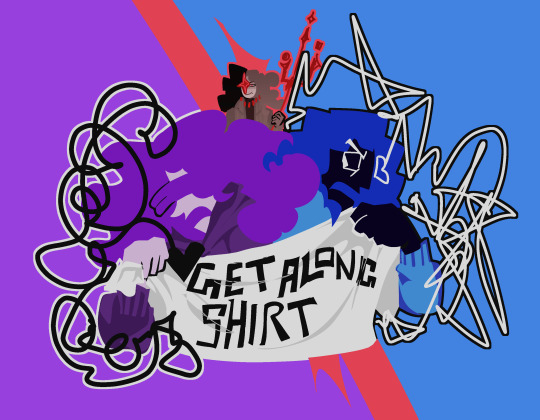
Redrew my rather old get along shirt drawing from like a year ago heh.
#new designs get to be used too#the rpg designs in proper but like I like drawing em like this in general its fun#lasso tool my beloved#fanvoids#chonny jash#chonnys charming chaos compendium#cj heart#cj mind#cj soul#cccc
241 notes
·
View notes
Text

The switch is now off.
#my art#fanart#digital art#art#clip studio paint#paint tool sai#off#off rpg#off game#the batter#rpg maker#fan art#off mortis ghost#illustration#batter true form#poster#drawing#2024
156 notes
·
View notes
Text
Dramaturgy IS a safety tool.
As an actual play channel that deals with intense topics, we employ a structured (and fun!) internal process for breaking story with our cast, which involves discussing the overall narrative structure of each Arc—and major beats that may arise in each session.
This not only equips our players with the tools to co-create the narrative, but also illuminates potentially sensitive story beats and the ways we’d be excited to facilitate them!
When many players’ comfort level around interesting but often intense topics is “Let’s talk about it first,” dramaturgy provides a structured, creatively fulfilling, and collaboratively enriching way of discussing details without setting off landmines.
Of course, we’re all human, and accidents happen. It’s the nature of improvised play. Conflict isn’t bad — how we handle it is what matters!
Dramaturgy has helped our table develop one of the most important safety features of all: a table culture of honesty and nuance we’re all responsible for contributing toward.
Our dramaturgical process has many more moving parts than that, of course, and we hope to cover those thoughts in future posts!
In the meantime, we hope this post was helpful and we implore you to go watch our show. We’re an all-transgender, POC-led dark fantasy TTRPG series telling stories in an original noncolonial, antiorientalist multiverse. Our current campaign, THE CHAOS PROTOCOL, won the 2024 Audio Fiction World Cup!
If you like gay disasters, stories about grief and family, trans Chinese diasporic methodologies of violence and becoming, and critical worldbuilding with an eye toward liberational storytelling… check us out? ✨
#ttrpg#safety tools#dnd#dnd safety tools#dnd advice#ttrpg advice#ttrpg design#indie ttrpg#rpg design#dnd design#ttrpg safety
79 notes
·
View notes
Text


'I remember everyone I killed, don't you?'
#that line hit so hard#what fucking brilliant writing#also ouch#because henry finally realises what he has become#yikes#my henry has always been a good man#avoiding death whenever he can but whenever hans was in danger my boy went on a rampage#this is how rpg works yeah? xD#kingdom come deliverance 2#kcd2#kcd2 spoilers#henry of skalitz#otis camera tools
68 notes
·
View notes
Text
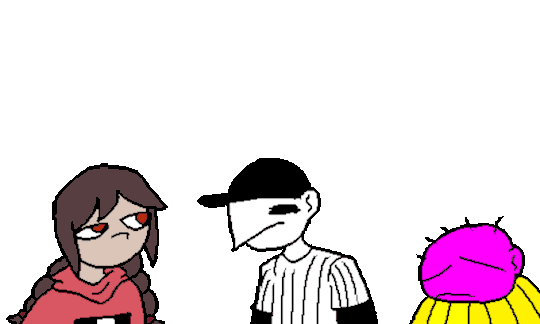
talkin bout friends and pals
#ive been having fun with animation but GOD it takes forever#at least in aseprite. which is my animation tool of choice#also the compression on this gif is kinda shitty and i hate it but whatevs#hilda's art landfill#madotsuki#yume nikki#poniko#the batter off#zacharie off#off game#space funeral#phillip space funeral#leg horse space funeral#leg horse#rpg maker#animation#lots of tags im sorry
506 notes
·
View notes
Text
Get your inns, taverns, pubs, and alehouses here!
You all meet up in an inn. But what's the inn like? What's it called? What can you do there? And how do I satisfy my players' unending appetite for entertainingly-named inns?
This generator has your answer. It will give you a name, a brief description including reputation and proprietor, and optional entertainments and encounters. Or you can generate a name and do the rest yourself!
Here's some names:
The Shirking Eagle
The Flea's Head
The Void on the Bridge
The Wrestler and Newt
The Mouse House
The Sheep's Serpent
The Honourable Eel
The Spectacles and Sword
The Bald Orb
The Smiths
The Toad on the Dragon
The Fighting Magpie's Arms
62 notes
·
View notes
Text
HAPPY 17TH ANNIVERSARY TO OFF
(づ ᴗ _ᴗ)づ
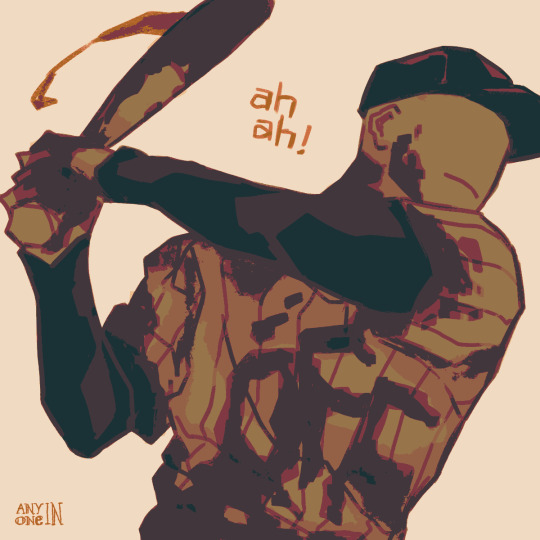
#artists on tumblr#paint tool sai#krita#fanart#digital artist#indie games#off rpg#off mortis ghost#off batter#off#off fanart#off the game#off game#off the batter#mortis ghost#the batter#the batter off#RAHHHHHH#I rlly like drawing the batter it's so cool and epic#OFF 17TH ANNIVERSARY#have an awesome sauce day guys
1K notes
·
View notes
Video
youtube
The Lancer Map Creation Tool by Interpoint Station is a program that lets you create complex yet readable battlefields in minutes, featuring a random generator to generate a map in seconds as well as assets integration to create your own terrain asset and biome.
174 notes
·
View notes
Text
The more you know:
[FR] J'ai découvert (thanks tiktok) ce petit site bien pratique qui référence des images qui sont libres de droits et/ou maintenant dans le domaine publique!
Je ne crois pas avoir vu beaucoup de gens en parler par ici, mais sharing is caring donc voilà! Si vous chercher des textures/images pour vos créations, je crois que vous allez en avoir pour un bon moment à hoarder le tout et explorer la plateforme!
-------
[EN] I discovered (thanks tiktok) this handy little site that references images that are royalty-free and/or now in the public domain!
I don't think I've seen many people talking about it around here, but sharing is caring so here you go! If you're looking for textures/images for your creations, I think you'll be hoarding and exploring the platform for a while !
See yah!
#public.work#https://public.work/#rpg ressources#ressources#french rpg#public domain#domaine publique#free to use#rpg resources#public work#rpg community#forum rpg#rpg#banner design#avatars#creation tool
144 notes
·
View notes
Text

Brood
[reshade 5.9.1; otis_inf camera tools]
[my hi-res bg3 shots]
392 notes
·
View notes
Text
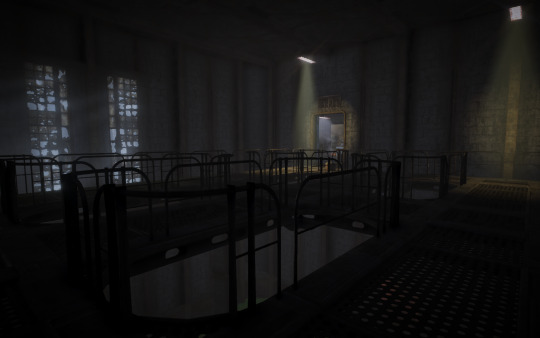


25 notes
·
View notes
Note
have a love/hate relationship with the modern gmod mapping community because the advent of "gmod horror" being a thing means the map with a really cool vibe can have a random jumpscare that completely ruins the feel. ran into a nifty map in Jazztronauts but it also had a cheesy jumpscare that FORCE QUIT you to menu (invalidating the props i had just collected). i'm still not over it, you promised me a 3-course dinner and then decked me in the face with a pie for desert
God yeah I understand that completely lmao. I have waltzed through some of the most innocuous maps possible while suppressing an urge to whip out the hacking goggles, just to make sure I'm not about to get JPEGed. Silver lining is that it always keeps me on my toes, I guess?
#ask#jazztronauts has always been great in that sense that you are given god tools and carte blanche to say Fuck U🖕 to 99% of scripting#like giving a kid who's scared of the dark a 10 billion lumen flashlight and an RPG
28 notes
·
View notes
Text
Ttrpg safety tools and the dog test
A quick rundown of what safety tools are: tools for setting boundaries in ttrpgs. Can be useful to some people, but often used really wrongly, and often seem overly gamey to me personally. It's like therapy speak for rpgs. And is similary used by the people it was meant to be used against.
One of the most common examples of these is the X card. The X card is a card with the letter X written on it. It sounds like a good idea if you've never interacted with people before. The X card is a boundary where one of the rules is you can't talk about the boundary. It's very useful for anyone who want to weaponize it, and not very useful for asserting actual boundaries.
There is also a type of chud who dislikes the the idea of safety tools because they think they're "woke". The only way to have a productive conversation around safety tools is to ignore them. Bad faith questions don't deserve good faith answers.
Now, a lot of people would think that its easier for a player to step out then deleate a scene. But a lot the culture around safety tools is based on this toxic highschool mindset around ttrpgs where someone feels like they both have a right, and a duty to be at every single momment of every session, and everyone else does to. So every single safety tool you'll see will assume the of lack the option of leaving the table at all. Being able to leave at any time is the ultimate boundary in ttrpgs and many other safety tools are attempting the impossible task of establishing boundaries without it. People compare them to safe words in bdsm. But it's like trying to create a safe word system but you have to cum and can't take breaks.
See part of the problem is 4chan and reddit have cultures of rpg horror stories. Which are useally lies. I'm not going to say fiction because that implies a relationship with the audience that they don't have. And these lies almost always have queer people, ND people, leftists, and anyone you'd see called a degenerate or weirdo as villains. While the type of nerd that Scott Pilgrim was the first book makes himself out to be a hero. And reddit also happens to be where the concept of safety tools was popularized.
It's this problem where people aren't trying to deal with actual triggers, they're trying to police content they morally condemn. R/rpg horror stories is the home of people who consider themselves outcasts for liking star wars and then have a deep fear of a marginalized person or someone from a slightly less mainstream subculture showing up at their table. And when they're the ones defining what a boundary conflict in rpg space looks like it's useally pretty bad. When a lot of safety tools go bad it's the case of weapons made to catch monsters being bad at dealing with humans.
And beyond all that. Beyond the specifics of rpg horror stories and it's influence. The way people talk about safety tools is mostly about removing content they deem objectionable from ttrpgs. When people talk about the X card and things like it, they're useally afraid someone will talk about something taboo and the table, and want a way to stop them, with the assumption that the rest of the party agrees. The extreme nature of how much someone has the power to censor, is brought with the assumption that what will be censored won't just violate their personal boundaries, but a community sense of morals.
They don't just want their triggers removed, they want things they deem immoral to be removed (not everyone who uses safety tools of course, but the hoard of bearded cishet white men who play 5e who dominate the conversation on them). That's just what a lot of the conversation around safety tools always comes down to. When somebody says they want safety tools to remove torture scenes or sex scenes from their table, it's not their personal triggers, its that they don't believe these things belong in the medium at all. They don't imagine what it would be like to be the only person in the room with their trigger, because the narrative they've created with problem players and safety tools, has made it so they assume the majority of the room shares their boundaries. Safety tools as they exist and are talked about are not built for a minority of players to be able to assert boundaries agaisnt the majority of players.
The dog test: so basically, while safety tools in ttrpgs have good reasons to exist, a lot of the time they're weapons players use to remove content they deem immoral. So often every discussion around things like the X card comes with a lot of moral condemnation, and assumptions about what content can ever be triggering vs what is ok. And this culture of moral condemnations can make safety tools especially dangerous for queer people and ND people, or just members of certain subcultures.
So I've developed the dog test. The dog test, is an example used to test if a safety tool (or more commonly someone talking about them) wants boundaries or wants moral policing. The dog test is simply to see how the safety tool is viewed if it's used to remove dogs from a game. Basically taking the commonly used examples like blood, or sex, and replacing them with the existence of dogs. Perhaps to add to it let's say the only case this hypothetical person will be ok with dogs is if they're killable enemies. This isn't unrealistic, a lot of people have trauma from dog bites, it's probably more likely to be a good faith trauma than a lot of the examples.
If they person is as willing to work with the needs of a player who has trauma around dogs as they are more sympathetic triggers than they've passed the dog test.
Disclaimer. A lot of these thoughts were developed in a discord conversation with @dragonpurrs and a lot of these words were originally things I said to it.
#196#ttrpg community#ttrpgs#ttrpg#rpg community#rpgs#dnd community#dnd#dungeons and dragons#d&d#boundaries#rpg horror stories#dming#gming#safety tools#x card#ttrpg stuff#ttrpg ideas#therapy speak#fuck reddit#rpg stuff#essay#long post#proship#anti censorship#profic#trigger words#social media#dogs#queer
36 notes
·
View notes